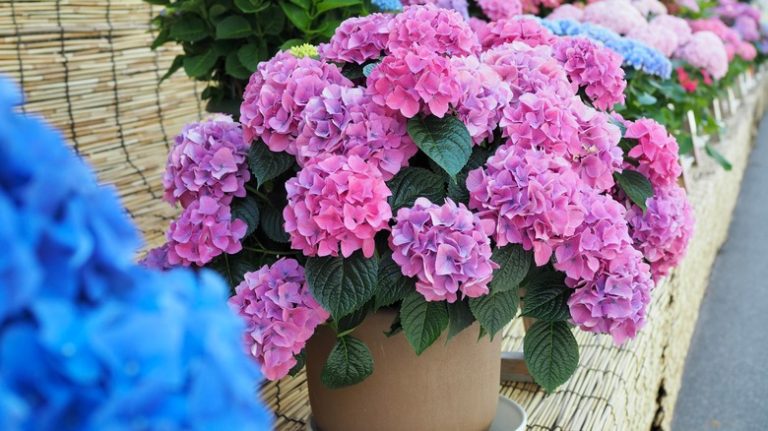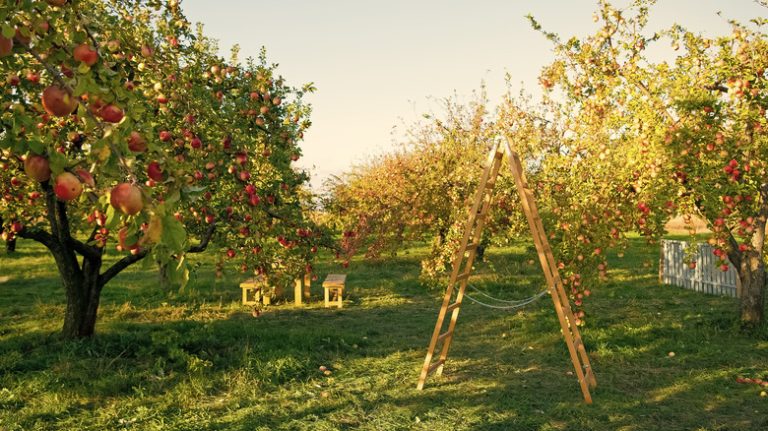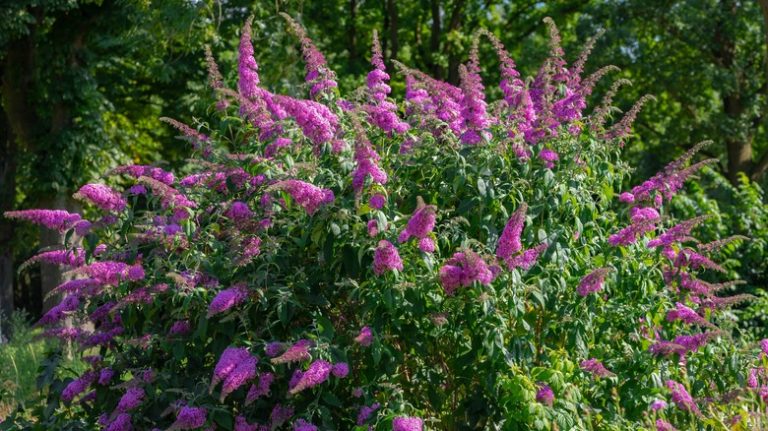If you’re a plant enthusiast and want to learn how to grow a Sago Palm from seed, then this article is for you! The Sago Palm, also known as Cycas Revoluta, is a popular plant among growers due to its unique appearance and interesting history. These medium-sized palms can grow up to 5 feet tall and cover your home garden with their beautiful trunks. But before you can enjoy the beauty of these plants, you need to know how to germinate their seeds and grow them into healthy seedlings.
First, it’s important to select viable Sago Palm seeds. The seeds should be clean and free from any hidden pests or diseases. To ensure this, growers often use gloves for decontamination. Once you have the right seeds, you’ll need to prepare a suitable germination medium. A mixture of peat moss and perlite works well for Sago Palm seed germination, providing the necessary drainage and moisture retention.
Before planting the seeds, it’s recommended to soak them in water for a day. This will help to break the dormancy of the seeds and improve their chances of germination. After soaking, transfer the seeds to the germination medium, placing them about an inch deep. To create a greenhouse-like environment, cover the container with a plastic bag or a plastic dome.
While the seeds are germinating, it’s important to keep the temperature and light conditions right. Sago Palm seeds prefer temperatures around 80 degrees Fahrenheit (27 degrees Celsius) during germination. Additionally, they need bright but indirect light. Placing the container in a shaded area of your home or using a grow light can help meet these requirements.
During the germination process, it’s essential to keep the germination medium moist, but not overly wet. Simply misting the soil with water should be sufficient. After a few weeks, tiny seedlings will start to emerge. At this point, you can remove the plastic cover and examine the young plants. If there are multiple seedlings in a single container, it’s best to transfer them to separate pots to give them more space to grow.
As the Sago Palm seedlings grow, it’s important to provide them with the right care. This includes watering when the soil feels dry, ensuring they receive enough light, and protecting them from extreme temperatures. Over time, these seedlings will develop into mature Sago Palms, eventually creating a beautiful addition to your garden.
Remember, growing Sago Palms from seed requires patience and proper care. But with the right techniques, you can enjoy the satisfaction of watching these amazing plants thrive in your home or garden.
The Garden of Eaden
In The Garden of Eaden, you can learn how to grow a sago palm from seed. Sago palm seeds, which are viable for a short period of time, need a temperature of around 75 degrees Fahrenheit (24 degrees Celsius) to germinate. To maintain this temperature, plant the seeds in a mix of damp peat and coarse sand, and cover the container with plastic wrap. Keep the container in a warm spot, such as near a window, but make sure it receives only indirect sunlight. This will allow the seeds to begin germination without the risk of overheating.
Before planting the sago palm seeds, it is important to decontaminate them. To do this, soak the seeds in a hydrogen peroxide solution for 15 minutes and then transfer them to a clean container filled with water for another 15 minutes. This process will help remove any toxins that may be hidden on the surface of the seeds.
Once the seeds have been decontaminated and are ready for planting, select a medium-sized pot with drainage holes. Fill the pot with a mix of peat and coarse sand, and then create a hole for each seed. Place a single seed in each hole and cover it with the soil mixture.
After planting the seeds, water the pot to ensure that the soil is evenly moist. From here, it is important to maintain the proper growing conditions for the sago palm seeds. Keep the pot in a warm area with temperatures around 75 degrees Fahrenheit (24 degrees Celsius) and provide indirect sunlight. Regularly check the soil moisture and water as needed to keep it damp but not soaking wet.
As the sago palm seedlings begin to grow, they will eventually outgrow the small pots. At this point, transfer them to larger containers filled with a well-draining potting mix. When selecting the new pots, choose ones that are at least half the size of the mature sago palm, as these plants have a long lifespan and can grow up to 20 feet (6 meters) tall.
To ensure the health and vitality of your sagos, apply a balanced fertilizer to the plants every two to three months. Follow the instructions on the fertilizer packaging for proper application rates. Additionally, continue to provide the plants with indirect sunlight and maintain appropriate temperatures.
When working with sago palms, it is important to be aware of the potential hazards they present. All parts of the plant, including the seeds, are toxic if ingested. It is recommended to wear gloves when handling the plants to avoid contact with the toxins. If planting sagos in areas where pets or children have access, be sure to keep them out of reach.
In summary, growing a sago palm from seed in The Garden of Eaden can be a simple and rewarding process. By following these steps, you can germinate sago palm seeds, transfer them to larger pots, and eventually have fully grown and healthy sago palm plants to admire in your garden.
Sago Palm Seed Germination – How To Grow A Sago Palm From Seed
If you’re interested in growing a sago palm from seed, there are a few simple steps you need to know. Although sagos are typically grown from offsets or trunks, planting seeds can be a fun and rewarding way to grow these beautiful palms. By following the necessary steps, you can successfully germinate sago palm seeds and enjoy watching them grow into mature plants.
First, it’s important to select high-quality sago palm seeds. Look for fresh, medium-sized seeds that are firm and free from any visible damage or discoloration. It’s also recommended to wear gloves when handling sago palm seeds, as they contain toxins that can cause gastrointestinal symptoms if ingested.
Start by preparing the seeds for germination. You can either scarify the seed coat by lightly sanding it or soak the seeds in warm water for 24 hours. This will help to soften the hard outer shell and allow moisture to penetrate, which is necessary for germination.
Next, prepare a suitable growing medium for the sago palm seeds. A mixture of equal parts perlite, peat moss, and coarse sand can provide the ideal conditions for germination. Fill a container with this medium, leaving enough space for the seeds to be buried.
Place the sago palm seeds onto the surface of the growing medium and lightly press them down so they make good contact with the soil. Mist the seeds with water to settle them into place.
Now, cover the container with a plastic wrap to create a humid environment. This will help to retain moisture and promote germination. Place the container in a warm location, ideally around 80 degrees Fahrenheit (27 degrees Celsius), and provide bright indirect light.
Keep the growing medium consistently moist, but be careful not to overwater. Watering with a spray bottle or mister is recommended to prevent waterlogging the seeds. It’s important to avoid standing water, as this can lead to fungal diseases that can kill the seeds.
After a few weeks, you should start to see small green sprouts emerging from the sago palm seeds. At this point, you can remove the plastic wrap and continue to care for the young plants. Provide them with plenty of bright, indirect light and water as needed to keep the soil evenly moist.
As the sago palm plants grow, you can gradually reduce watering frequency. Allow the soil to dry out slightly between waterings, as this will encourage the roots to penetrate and establish in the soil. Once the plants are larger, they will require less frequent watering than younger plants.
It’s worth noting that sago palm plants grow slowly, and it can take several years for them to reach maturity. With patience and proper care, you can watch your sago palm grow into a beautiful addition to your garden or indoor space.
Overall, growing a sago palm from seed is a rewarding process that can be enjoyed by palm enthusiasts and gardeners alike. By following the necessary steps and providing the right conditions, you can successfully germinate and grow sago palm seeds into stunning palms.
Growing Sago Palm from Seed
Growing a Sago Palm from seed can be an exciting and rewarding endeavor for plant enthusiasts. The Sago Palm, also known as Cycas revoluta, is a popular ornamental plant that can add a tropical touch to any home or garden.
To start growing a Sago Palm from seed, you will need mature, viable seeds. These seeds can be collected from mature Sago Palm plants or purchased from a reliable source. It is important to select healthy seeds with no signs of disease or damage.
Before planting the seeds, it is recommended to soak them in warm water for 24 to 48 hours. This will help soften the seed coat and promote germination. After soaking, transfer the seeds to a plastic bag filled with a moistened medium-sized peat moss or cocopeat. Keep the bag in a warm and dark location, such as a cupboard or a drawer. This will provide the necessary temperature and moisture for the seeds to germinate.
Sago Palm seeds require a warm temperature of around 75 to 85 degrees Fahrenheit (24 to 29 degrees Celsius) for germination. It is important to maintain a constant temperature during this period. Using a heating mat or a seedling heat lamp can help achieve the necessary temperature.
Once the seeds germinate and sprout, they can be transferred to individual pots filled with a well-draining potting mix. It is essential to provide adequate light for the seedlings, but avoid direct sunlight. Sago Palms prefer shade or filtered light, especially when they are young.
Regular watering is necessary for the seedlings, but be cautious not to overwater, as this can cause root rot. Allow the top inch of soil to dry out before watering again. Maintaining proper drainage is crucial for the health of the plants.
It is also important to note that all parts of the Sago Palm contain cycasin, a toxic compound. This compound can cause severe illness if ingested, and even skin contact with the sap can cause a rash or irritation. It is advisable to wear gloves and wash hands thoroughly after handling the plants or their seeds.
As the Sago Palm grows, it will eventually outgrow its pot and may need to be transferred to a larger one. The plant grows at a slow pace, so re-potting may not be necessary for several years. It is important to use a well-draining potting medium and maintain the same growing conditions.
In conclusion, growing a Sago Palm from seed can be a rewarding experience for plant enthusiasts. By selecting healthy seeds, providing the necessary germination conditions, maintaining proper watering and drainage, and taking precautions with the toxic compounds, growers can successfully grow their own Sago Palm plant.
The Hidden Hazard: A Single Sago Palm Seed Can Kill a Medium-Sized Dog
While the sago palm may be an attractive addition to your garden, it’s important to be aware of the hidden dangers it poses, especially to our furry friends. Just a single sago palm seed can be fatal if ingested by a medium-sized dog.
The sago palm, also known as Cycas revoluta, is a larger palm-like plant that grows in warm climates. Although its seeds may appear harmless, they contain a deadly toxin called cycasin. Even a small amount of this toxin can cause severe gastrointestinal issues and lead to liver failure in dogs.
To protect your pets from this hidden hazard, it’s crucial to keep your garden clean and show caution when handling sago palm seeds. Always wear gloves when working with them, as they can release hydrogen cyanide if crushed or damaged.
If your dog has ingested a sago palm seed, immediate action is necessary. Contact your veterinary professional right away for guidance. It’s essential to note that inducing vomiting is not recommended, as it can cause further harm.
When it comes to growing sago palms from seeds, it’s important to know that not all seeds are viable. Only the largest and roundest seeds are likely to be successful. To maximize your chances of success, soak the seeds in a 5% hydrogen peroxide solution for about 15 minutes. This will help remove any remaining cycasin.
Once clean, plant the sago palm seeds in a mixture of peat and perlite. Keep the soil temperature at around 75 to 85 degrees Fahrenheit for optimal germination. Maintain a moist environment and place the seeds near a window to receive ample sunlight.
As the seedlings start to grow, it’s important to continue monitoring them. Remember that sago palms can take several years to reach maturity, so be patient. If you plan on planting them outdoors, make sure your garden is dog-proof and that pets can’t access the plants or stools.
For sago palm enthusiasts who want to grow these plants at home, it’s crucial to be aware of the potential dangers they can pose to pets. By taking proper precautions and being knowledgeable about the risks, you can enjoy the beauty of sago palms without putting your furry friends at risk.




